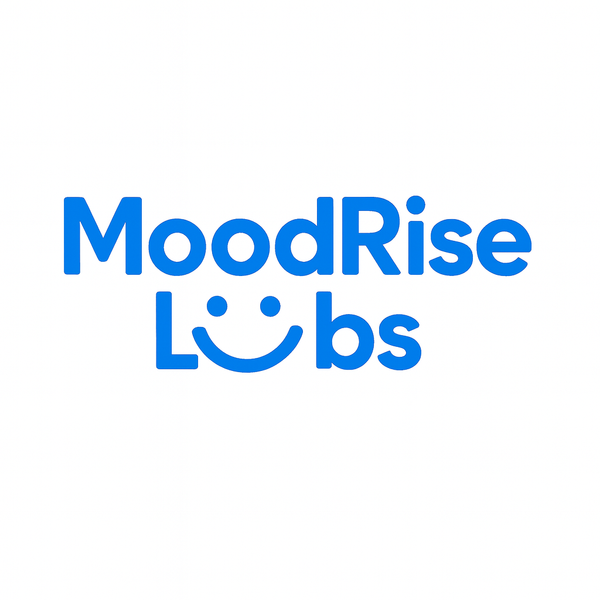Breathing Exercises That Work in 60 Seconds: Quick Tools for Calm and Confidence
Introduction: Why Quick Breathing Matters
Anxiety and stress can creep up at the most inconvenient moments: right before a presentation, during a tough conversation, or even while waiting in line at the store. In these situations, you don’t always have 20 minutes for meditation, a yoga class, or a long therapy session. What you do have is your breath.
Breathing is one of the most powerful levers you can pull to reset your nervous system quickly. Even in as little as 60 seconds, the right breathing exercise can lower your heart rate, quiet racing thoughts, and bring a sense of calm. Unlike supplements or therapy sessions, breathwork is always available, always free, and requires no tools.
This article dives into the science behind rapid-acting breathwork and introduces powerful one-minute breathing techniques that can shift your body from anxious to centered. We’ll also explore how these practices complement therapy, lifestyle habits, and even supplements that support calm confidence.
Looking for online therapy for people with Social Anxiety? Click Here.
🌬️ The Science of Breath and Stress

The Nervous System Connection
Your breath is a direct doorway to your autonomic nervous system, which controls stress responses. Fast, shallow breathing signals danger and activates the sympathetic nervous system (fight-or-flight mode). Deep, slow, rhythmic breathing stimulates the parasympathetic nervous system (rest-and-digest mode).
Research shows that just a few controlled breaths can:
Lower blood pressure.
Reduce cortisol (the stress hormone).
Increase heart rate variability (HRV), a marker of resilience.
Calm overactive brain circuits linked to anxiety.
Why 60 Seconds Is Enough
Studies from Stanford and Harvard show that even six to ten controlled breaths can create measurable physiological changes. That’s less than one minute of focused breathing—making it a practical intervention when you feel stress building.
⏱️ 60-Second Breathing Techniques for Calm Energy
Here are the most effective exercises you can use anywhere, anytime:
🌿 Box Breathing (4-4-4-4)
How: Inhale for 4 seconds → Hold for 4 seconds → Exhale for 4 seconds → Hold for 4 seconds.
Why it works: Balances oxygen and CO₂ levels, grounding both body and mind.
When to use: Before a social event, a big meeting, or when you feel overwhelmed.
Want to try Breathwork? Click Here.
🌊 4-7-8 Breath
How: Inhale through the nose for 4 → Hold for 7 → Exhale through the mouth for 8.
Why it works: Extends exhalation, triggering the parasympathetic system and calming racing thoughts.
When to use: Before bed, during insomnia, or when panic feels near.
🔥 The Physiological Sigh (Two Inhales + Long Exhale)
How: Take one deep inhale through the nose, a second short inhale, then slowly exhale fully. Repeat 2–3 times.
Why it works: Scientifically shown to rapidly reduce stress by releasing trapped CO₂ in the lungs.
When to use: In sudden spikes of anxiety, like before speaking up in a group.
🌬️ Coherent Breathing (5-5 Rhythm)
How: Inhale for 5 seconds → Exhale for 5 seconds. Continue for one minute (about 6 full breaths).
Why it works: Stabilizes HRV, promotes emotional regulation, and creates a sense of balance.
When to use: As a daily practice to build resilience against stress.
❄️ Cooling Breath (Sitali Pranayama)
How: Curl your tongue like a straw (or purse lips if you can’t roll tongue) → Inhale through tongue → Exhale through nose.
Why it works: Lowers body temperature and reduces agitation.
When to use: In heated arguments, summer heat, or when stress feels physically hot.
🌀 Alternate Nostril Breathing (Nadi Shodhana)
How: Close right nostril, inhale left → Switch, exhale right → Inhale right → Switch, exhale left.
Why it works: Balances left and right brain hemispheres, clears racing thoughts.
When to use: Before work, study, or creative tasks when you need calm focus.
🧘 Therapy and Breathwork: Why They Belong Together
Breathwork isn’t just a standalone stress hack—it can enhance therapy.
In CBT (Cognitive Behavioral Therapy): Breathing techniques are used as grounding skills when anxiety spikes.
In Trauma Therapy: Controlled breathing can help regulate nervous system responses during triggering conversations.
In Mindfulness-Based Therapy: Breath becomes the anchor to bring clients into the present.
Therapists often encourage patients to pair cognitive reframing with calming breathwork—making difficult emotional work feel safer.
Looking for online therapy for people with Social Anxiety? Click Here.
💊 Supplements That Support Breathwork Benefits

Supplements can’t replace the act of breathing, but they can amplify its effects by lowering baseline anxiety and supporting relaxation. Here are some synergistic options:
Magnesium Glycinate: Reduces muscle tension and supports GABA, the brain’s calming neurotransmitter.
L-Theanine (from green tea): Increases alpha brainwaves, promoting calm focus—pairs beautifully with breathing before social events.
Ashwagandha: An adaptogen shown to reduce cortisol and blunt stress reactivity.
Omega-3 Fatty Acids: Support brain health and emotional regulation.
Valerian Root or Passionflower: Gentle herbal options for deeper calm in the evenings.
⚠️ Always consult with a healthcare provider before starting supplements, especially if taking medications.
Looking for supplements for people with Social Anxiety? Click here.
🌄 Integrating Breathwork into Daily Life
Breathing practices work best when woven into daily routines, not just emergencies.
Morning Reset: Start your day with 1 minute of coherent breathing.
Pre-Event Calm: Use the physiological sigh before walking into a stressful meeting.
Bedtime Routine: Wind down with 4-7-8 breathing.
In Therapy: Pair box breathing with journaling or reflection exercises.
Over time, these short practices build a resilient nervous system that reacts less strongly to stress triggers.
🧩 The Psychology of “Quick Wins”
One of the reasons 60-second breathing works so well is psychological. When anxiety hits, we crave something immediate. Unlike waiting weeks for therapy breakthroughs or supplement effects, breathwork delivers results now.
This creates a feedback loop:
You use a 60-second breath → You feel better.
Your brain learns “I can regulate my anxiety.”
Confidence builds, reducing future anxiety spikes.
This sense of agency is crucial in overcoming social anxiety and panic tendencies.
🌐 Breathwork, Therapy, and Nutrition: The Complete Trio
True emotional balance often requires multiple supports:
Breathwork: Immediate relief in 60 seconds.
Therapy: Long-term rewiring of thought patterns.
Supplements & Nutrition: Biological foundation for a calm nervous system.
When combined, these tools help reduce social stress, regulate emotions, and promote confidence in daily life.
Conclusion: Your 60-Second Calm Reset
You don’t need hours of meditation or complicated practices to find calm. With just one minute of intentional breathing, you can shift from spiraling anxiety to grounded confidence. Whether it’s box breathing, the physiological sigh, or coherent breathing, these tools are always available, portable, and effective.
Paired with therapy and supported by calming supplements, breathwork is a cornerstone of a holistic approach to emotional health. Next time stress builds, remember: you already carry the fastest tool for calm—your breath.
Looking for supplements for people with Social Anxiety? Click here.
📚 References
Huberman, A. (2021). "The Science of Breathing." Huberman Lab Podcast.
Brown, R. P., & Gerbarg, P. L. (2005). "Sudarshan Kriya Yogic breathing in the treatment of stress, anxiety, and depression." Journal of Alternative and Complementary Medicine.
Jerath, R., Edry, J. W., Barnes, V. A., & Jerath, V. (2006). "Physiology of long pranayamic breathing." Medical Hypotheses.
Lehrer, P., & Gevirtz, R. (2014). "Heart rate variability biofeedback: how and why does it work?" Frontiers in Psychology.
Nestor, J. (2020). Breath: The New Science of a Lost Art.
Related Posts
-

Supplements for Staying Present and Grounded
L-Theanine is nature’s calm focus enhancer 🍃. Derived from green tea, it promotes relaxation without drowsiness by balancing GABA, serotonin, and dopamine. Learn how this amino acid supports smooth focus, emotional balance, and mindful presence in daily life.
-
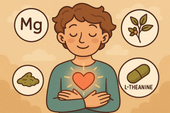
Supplements That Support Emotional Openness
Emotional openness starts in the body 🌿. When your nervous system feels safe, your heart can express freely. Learn how supplements like magnesium, Ashwagandha, and L-theanine support calm connection, balanced emotions, and the courage to stay authentically open.
-

Daily Supplement Routine for Consistent Confidence
Confidence is built through rhythm, not luck 🌿. A daily supplement routine can help your energy, mood, and focus stay balanced from morning to night. Learn how adaptogens, magnesium, and B vitamins work together to create steady calm and lasting self-assurance.
-

Supplement Timing Tips for Social Success
Social confidence has its own rhythm 🌿. When you time your supplements to match your body’s natural energy cycles, calm and focus align effortlessly. Learn how magnesium, L-theanine, and adaptogens can help you stay grounded, charismatic, and fully present at just the right moment.
-
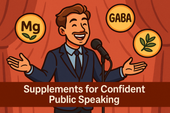
Supplements for Confident Public Speaking
Public speaking confidence begins with biology 🎤🌿. When your nervous system is calm and your neurotransmitters are balanced, your voice, focus, and presence flow naturally. Learn how supplements like magnesium, GABA, and adaptogens can align your body’s chemistry with the calm clarity you need to speak authentically.
-

Travel-Friendly Supplements for On-the-Go Confidence
Magnesium is the ultimate travel mineral for calm and balance ✈️🌿. It relaxes the nervous system, eases stress from jet lag or fatigue, and supports muscle and mental recovery. Discover how this essential nutrient keeps you centered, focused, and energized wherever your journey takes you.
-

Supplements for Confident Video Calls
Magnesium is the mineral that brings calm to both body and mind 🌿. It supports relaxation, better sleep, and a stable mood by regulating cortisol and soothing the nervous system. Learn how magnesium supplements can restore balance, reduce anxiety, and help you feel centered under stress.
-

Ashwagandha for Calming the Stress Response
Ashwagandha helps your body remember how to relax 🌿. As one of the most trusted adaptogens, it calms the stress response by lowering cortisol, soothing the nervous system, and restoring natural energy balance. Learn how this ancient herb promotes deeper sleep, emotional steadiness, and resilience in today’s high-stress world.
-
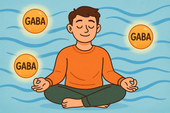
How GABA Supplements Can Help You Feel Grounded
GABA is the brain’s natural calm signal 🌿. When life feels overwhelming, this neurotransmitter helps quiet mental noise, relax muscles, and restore emotional balance. Learn how GABA supplements can calm the nervous system, reduce anxiety, and help you feel grounded in your body again.
-
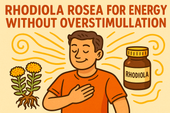
Rhodiola Rosea for Energy Without Overstimulation
Rhodiola rosea offers a rare kind of energy — one rooted in calm, not chaos 🌿. Known as the golden root, this adaptogen enhances endurance, focus, and mood by balancing cortisol and supporting the nervous system. Discover how Rhodiola restores natural vitality without the overstimulation of caffeine or stress-driven fatigue.
-
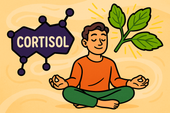
Holy Basil and Cortisol Control
Holy basil, or Tulsi, is one of nature’s most powerful adaptogens 🌿. Revered in Ayurvedic medicine for centuries, it helps balance cortisol, calm the mind, and protect the body from stress. Learn how holy basil restores hormonal harmony, supports energy, and promotes emotional resilience in a fast-paced world.
-
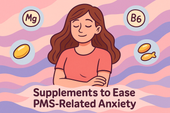
Supplements to Ease PMS-Related Anxiety
Hormones are the body’s messengers — guiding mood, energy, metabolism, and balance. 🌿 When these chemical signals flow in harmony, life feels stable and calm. Learn how nutrients, sleep, and stress management help keep hormonal communication clear, supporting emotional steadiness and overall vitality.
-
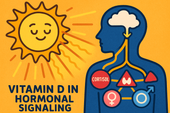
The Role of Vitamin D in Hormonal Signaling
Testosterone is more than a hormone — it’s a signal of strength, motivation, and vitality 💪. Learn how this key molecule shapes energy, mood, muscle growth, and focus in both men and women. Discover how nutrition, vitamin D, and minerals like zinc and magnesium support healthy testosterone signaling for balanced power and performance.
-
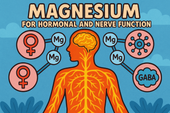
Magnesium for Hormonal and Nerve Function
Magnesium is the mineral that connects calm and vitality ⚡. It fuels nerve transmission, supports hormonal balance, and restores the body’s ability to relax under stress. Learn how magnesium strengthens communication between the nervous and endocrine systems, stabilizing cortisol, thyroid, and reproductive hormones for true equilibrium.
-

Zinc and Its Role in Hormonal Stability
Zinc is one of the body’s most powerful regulators ⚖️—a trace mineral that keeps hormones, metabolism, and energy in perfect rhythm. Learn how zinc supports testosterone, thyroid function, cortisol balance, and emotional stability while protecting against modern stress and deficiency. Discover why restoring zinc can help your body feel grounded, focused, and hormonally resilient.
-
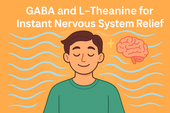
GABA and L-Theanine for Instant Nervous System Relief
When stress hits, your nervous system needs relief — not more stimulation 🌿. Discover how GABA and L-theanine work together to calm the body, quiet racing thoughts, and restore inner balance. Learn the science behind these natural compounds that ease tension, support emotional stability, and bring instant peace without sedation.
-

B-Vitamins for Faster Nerve Communication
Vitamin B1, or thiamine, is your brain’s ignition key 🔑—turning food into cellular energy and powering rapid nerve signaling. Discover how this essential nutrient fuels neurotransmitter activity, supports focus and coordination, and prevents fatigue or mental fog. Learn why maintaining optimal thiamine levels keeps your nerves firing fast and your mind sharp.
-

Supplements That Help You Stay Alert Without Anxiety
L-theanine is nature’s secret for calm focus and balanced energy 🌿. Found in green tea, this gentle amino acid promotes relaxation, supports alpha brain waves, and helps you stay alert without stress or grogginess. Discover how L-theanine can enhance focus, improve sleep quality, and restore mental calm in a fast-paced world.
-
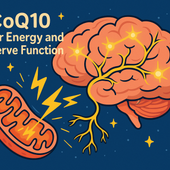
CoQ10 for Energy and Nerve Function
CoQ10 powers every cell in your body—from your heart to your brain ⚡. Learn how this essential compound fuels mitochondria, boosts nerve function, and protects your brain from oxidative stress. Discover how supplementing with CoQ10 can restore energy, sharpen focus, and support long-term neurological vitality.
-

Supplements That Support Nerve Signaling for Mental Energy
Your brain’s electrical network depends on magnesium—one of the most vital minerals for nerve signaling, calm focus, and steady mental energy ⚡. Learn how this essential nutrient powers neurotransmission, supports relaxation, and helps protect your nervous system from stress overload—so your mind feels balanced, alert, and resilient every day.
-

L-Theanine for Sleep Without Grogginess
L-theanine offers a natural path to better sleep—without the next-day fog. 🌙 Found in green tea, this gentle amino acid calms the mind, lowers stress hormones, and promotes deep relaxation without sedation. Learn how L-theanine balances your brainwaves, reduces nighttime anxiety, and helps you wake up refreshed, alert, and clear-minded.
-

Supplements to Support the Circadian Rhythm
Your body’s natural clock depends on more than just sunlight—it also relies on key nutrients to stay in sync. 🌞🌙 Discover the best supplements to support your circadian rhythm, from melatonin and magnesium for deep sleep to vitamin D and adaptogens for morning energy. Learn how to realign your internal clock for better rest, sharper focus, and stable mood every day.
-

Melatonin and Cortisol: The Night vs. Day Hormones
Melatonin and cortisol are your body’s night-and-day hormones—one helping you drift into deep sleep, the other powering your alertness each morning. 🌙☀️ Learn how these two forces work together to regulate your energy, mood, and recovery. Discover how modern stress, artificial light, and poor routines can throw them off balance—and how to naturally reset your rhythm for calm nights and focused days.
-

Supplements for Deeper Sleep and Nervous System Reset
Struggling to sleep even when you’re exhausted? 🌙 Discover how to reset your nervous system and achieve deeper, more restorative rest with the right blend of supplements, breathwork, and therapy. From magnesium and L-theanine to slow exhalations and somatic healing, this guide helps you rebuild your body’s natural rhythm of calm and recovery—so you can wake up truly renewed.
-

Rhodiola Rosea for Emotional Stability: Finding Balance Through Resilience
Stress is the body’s natural alarm system — useful in bursts, but draining when it never turns off. Learning to regulate it helps restore calm focus, emotional balance, and physical vitality. 🌿💫
-
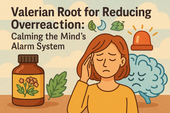
Valerian Root for Reducing Overreaction: Calming the Mind’s Alarm System
GABA is the brain’s natural brake pedal — calming overstimulation and helping you think clearly under stress. When balanced, it brings a sense of inner peace, emotional control, and focus. 🌿🧠💫
-

Supporting Adrenal Health for a Steadier Mood
Cortisol is the body’s built-in stress alarm — essential in short bursts but harmful when constantly elevated. Learning to balance it naturally restores calm, focus, and emotional stability. 🌿⚖️
-

Cold Showers and Adaptogens for a Reset: Reclaiming Energy, Calm, and Control
Adaptogens help the body adapt to stress, restoring calm energy and balance. These ancient herbs strengthen resilience, regulate mood, and support focus — helping you stay grounded through life’s ups and downs. 🌿💫
-
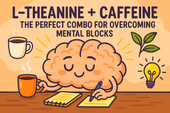
L-Theanine + Caffeine: The Perfect Combo for Overcoming Mental Blocks
Neurotransmitters are the brain’s messengers — tiny molecules that shape how we think, feel, and focus. When they’re in balance, we experience calm energy, clear thinking, and emotional harmony. 🌿🧠✨
-
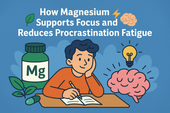
How Magnesium Supports Focus and Reduces Procrastination Fatigue
Magnesium is the quiet mineral behind mental clarity and steady focus. By calming the nervous system and restoring cellular energy, it helps transform fatigue and overthinking into calm, productive flow. 🌿⚡🧠
-

B Vitamins for Beating Procrastination and Boosting Energy
Procrastination isn’t just a mindset — it’s often a signal of low energy and nutrient depletion. B vitamins recharge the brain’s motivation circuits, boosting focus, clarity, and the drive to take action. 🌿⚡🧠
-
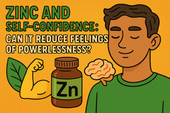
Zinc and Self-Confidence: Can It Reduce Feelings of Powerlessness?
Zinc isn’t just a mineral — it’s the foundation of emotional strength. By balancing neurotransmitters and calming the nervous system, it helps you feel more centered, assertive, and confident from the inside out. 🌿💪
-

How Vitamin D Deficiency Impacts Emotional Resilience in Co-Dependent Patterns
Co-dependency is the emotional tug-of-war between connection and self-loss — a pattern born from giving too much and receiving too little. Learning to untangle this dynamic allows for real love rooted in balance, not fear. 🌿💛
-

B Vitamins for Mood Stability and Self-Worth in Co-Dependency
Vitamin B1, or thiamine, powers both the body and the brain — fueling focus, energy, and emotional clarity. Supporting your nervous system with this essential nutrient helps restore calm and mental resilience. 🌿⚡🧠
-
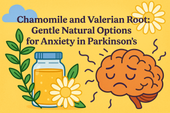
Chamomile and Valerian Root: Gentle Natural Options for Anxiety in Parkinson’s
Anxiety often feels like a storm inside the mind — racing thoughts, tightness, and unease that make it hard to focus or rest. But learning to understand and calm that inner storm opens the door to peace and emotional balance. 🌿🧠
-
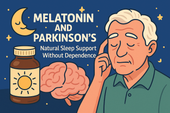
Melatonin and Parkinson’s: Natural Sleep Support Without Dependence
Melatonin is the body’s natural sleep hormone — guiding your mind into rest and your body into recovery. Supporting its natural rhythm can improve sleep quality, mood, and overall health without dependence. 🌙🧠
-

Choline and Brain Health in ADHD: What You Should Know
Inflammation can quietly affect both the body and mind, disrupting focus, mood, and energy. Understanding how it works — and how to calm it — is key to restoring balance, clarity, and long-term health. 🌿🧠
-
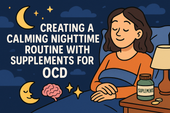
Creating a Calming Nighttime Routine with Supplements for OCD
Sleep is the brain’s nightly repair ritual — a time when emotional chaos settles and clarity returns. Prioritizing deep rest restores focus, calm, and resilience, helping both the body and mind recover naturally. 🌙🧠
-

How to Safely Combine OCD Medications with Natural Supplements
Supplements bridge the gap between nutrition and mental wellness — supporting focus, calm, and energy from within. The right combination of nutrients can help balance mood, sharpen the mind, and restore long-term resilience. 🌿🧠
-

Building a Supplement Routine for OCD Symptom Relief
OCD can feel like being trapped in your own thoughts — a battle between control and chaos. Understanding the science behind these cycles is the first step toward breaking free and finding calm within the mind. 🌿🧠
-

Curcumin and Brain Inflammation in OCD: Can It Help?
Inflammation doesn’t just affect the body — it can silently influence the brain, fueling anxiety, fatigue, and mental fog. By understanding how inflammation works, we can learn how to calm the nervous system and restore inner balance. 🌿🧠
-

Probiotics and the Gut-Brain Connection in OCD
Serotonin, often called the “feel-good” chemical, shapes our mood, focus, and emotional balance. By keeping this neurotransmitter in harmony, we support calm thinking, better sleep, and greater mental resilience. 🌿🧠
-

B Vitamins and OCD: Supporting Energy and Neurotransmitter Balance
OCD isn’t just about habits — it’s about the brain’s struggle to find control in chaos. Understanding the neurological roots behind intrusive thoughts can help replace fear with clarity and guide healing toward calm awareness. 🌿🧠
-
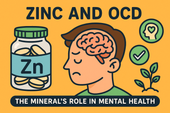
Zinc and OCD: The Mineral’s Role in Mental Health
Zinc is more than a trace mineral — it’s a key regulator of mood, memory, and emotional balance. By stabilizing neurotransmitters like serotonin and glutamate, zinc helps calm obsessive thought patterns and supports overall mental clarity. 🌿🧠
-

N-Acetylcysteine (NAC) and OCD: Promising Research Findings
Antioxidants act as the body’s natural defense system, neutralizing free radicals that damage brain cells and worsen anxiety or fatigue. Supporting antioxidant balance with nutrition and supplements helps protect focus, memory, and emotional stability. 🌿🧠
-
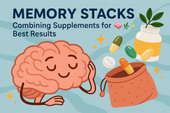
Memory Stacks: Combining Supplements for Best Results
Memory weaves the story of who we are — connecting past, present, and future through every experience we store and recall. Strengthening memory means nurturing the brain’s energy, balance, and emotional calm so learning becomes effortless. 🌿🧠
-
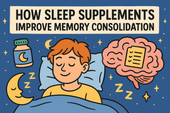
How Sleep Supplements Improve Memory Consolidation
Stress can cloud thinking, disrupt sleep, and weaken memory — but understanding its effects on the brain is the first step toward calm. By learning to regulate the nervous system, we can protect focus, energy, and emotional balance. 🌿🧠
-
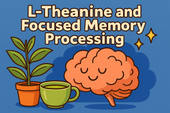
L-Theanine and Focused Memory Processing
Science is the art of curiosity and precision — a quest to understand the unseen patterns that shape life. From molecules to galaxies, every discovery begins with observation, imagination, and the courage to ask “why.” 🔬💡
-
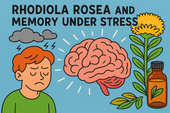
Rhodiola Rosea and Memory Under Stress
Stress clouds memory, slows thinking, and drains energy — but the good news is, the brain can recover. By understanding how stress affects focus and emotion, we can learn to regulate it, restore clarity, and protect long-term cognitive health. 🌿🧠
-
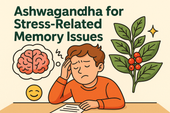
Ashwagandha for Stress-Related Memory Issues
Adaptogens are nature’s answer to modern stress. These powerful herbs — like Ashwagandha, Rhodiola, and Holy Basil — help balance cortisol, support calm focus, and strengthen the body’s resilience, bringing the mind back to harmony. 🌿🧘♀️
